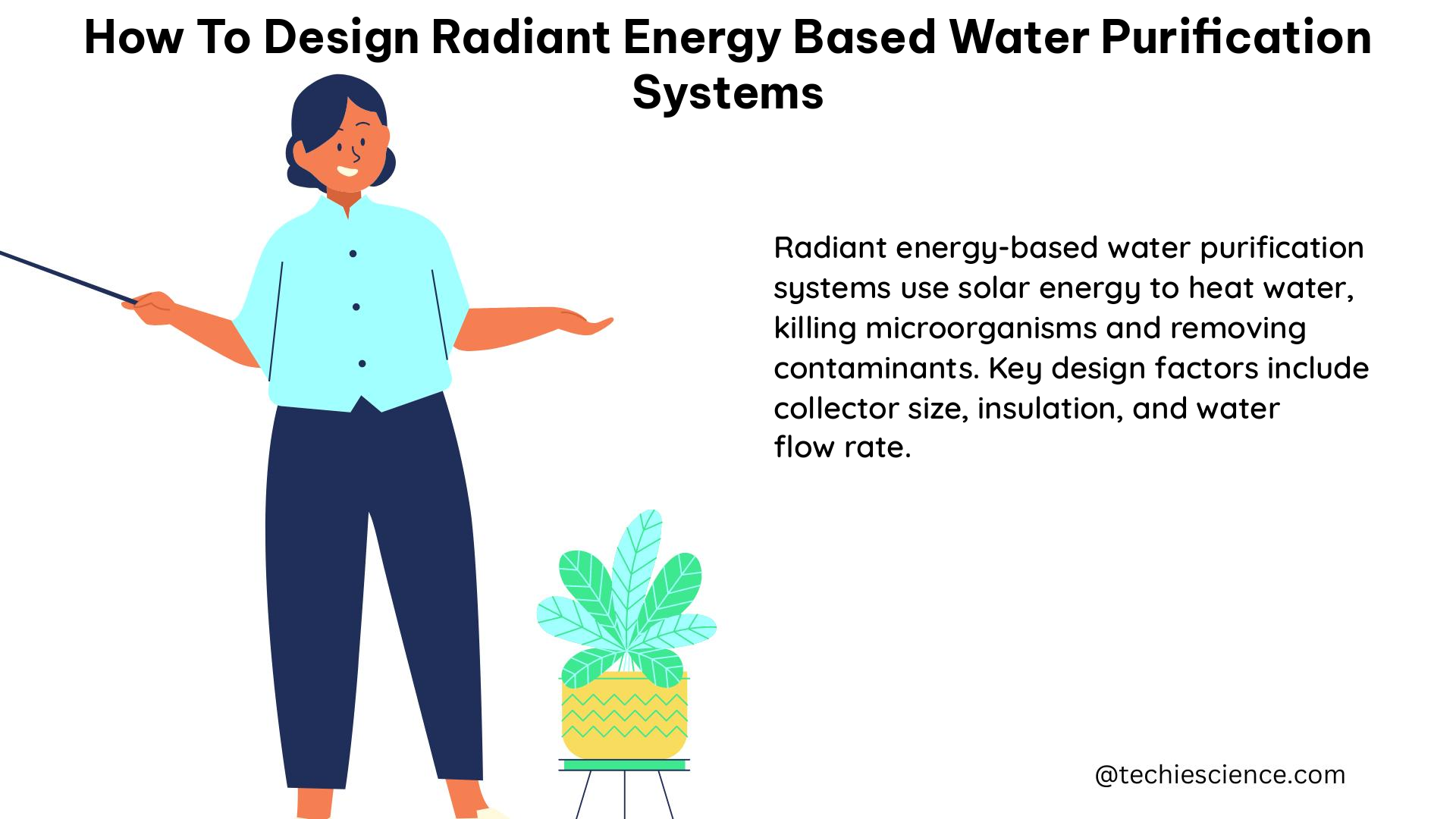Designing radiant energy-based water purification systems involves the use of electromagnetic radiation, primarily in the ultraviolet (UV) range, to disinfect water and break down contaminants. The key measurable and quantifiable data for designing such systems include wavelength, dosage, relative output or effectiveness, germicidal effectiveness, Total Organic Carbon (TOC) levels, resistivity, temperature, and flow rate of the water.
Wavelength and Dosage
The most effective wavelength for bactericidal action is 254 nm, which damages DNA and RNA polymerase, preventing replication. For oxidizing organics, radiation at 185 nm is most effective, as it breaks large organic molecules into smaller ionized components, which can then be removed by a downstream high purity ion exchange resin bed.
To avoid the production of live but inactivated microorganisms, UV chambers and lamps need to be designed to provide a sufficient dosage of UV. The dosage of UV radiation is the product of the UV intensity (measured in mW/cm²) and the exposure time (measured in seconds). The required dosage for effective disinfection depends on the type of microorganisms present in the water and can range from 16 mJ/cm² for bacteria to 186 mJ/cm² for viruses.
Relative Output and Effectiveness

The relative output or effectiveness of a UV lamp is a measure of its ability to produce the desired wavelength and dosage. This can be measured in various ways, such as the relative output at different wavelengths or the germicidal effectiveness curve, which shows the relationship between wavelength and bactericidal action.
The germicidal effectiveness of a UV lamp is a measure of its ability to kill or inactivate microorganisms. This can be measured by comparing the number of live microorganisms before and after exposure to the UV lamp. The germicidal effectiveness of a UV lamp is typically expressed as the log reduction value (LRV), which represents the logarithmic reduction in the number of microorganisms.
Total Organic Carbon (TOC) Levels
The effectiveness of UV radiation in breaking down organic contaminants can be measured by the reduction in TOC levels. A TOC level of less than 5 ppb is considered ultra-pure water. The reduction in TOC levels is achieved through the photo-oxidation of organic compounds, which breaks them down into smaller, more easily removable molecules.
Resistivity and Conductivity
The resistivity of water is a measure of its ability to conduct electricity. The resistivity of water is decreased as a result of the CO2 released by photo-oxidation, as it produces H2CO3 (H+, HCO3-). This increase in conductivity can be used as an indicator of the effectiveness of the UV treatment in breaking down organic contaminants.
Temperature and Flow Rate
The temperature of the water can affect the performance of the UV lamp, as well as the rate of chemical reactions. Therefore, it is important to control and monitor the temperature of the water during the purification process. The optimal temperature range for UV disinfection is typically between 10°C and 30°C.
The flow rate of the water can affect the dosage of UV radiation and the contact time between the water and the UV lamp. Therefore, it is important to control and monitor the flow rate of the water during the purification process. The required contact time for effective disinfection depends on the UV intensity and the type of microorganisms present in the water, but it is typically in the range of 10-30 seconds.
Design Considerations
When designing a radiant energy-based water purification system, it is important to consider the following factors:
- UV Lamp Selection: Choose a UV lamp with the appropriate wavelength, power, and intensity to achieve the desired disinfection and organic contaminant removal.
- UV Chamber Design: Design the UV chamber to ensure that the water is exposed to the optimal UV dosage, taking into account factors such as the water flow rate, lamp placement, and chamber geometry.
- Pretreatment: Incorporate pretreatment steps, such as filtration or adsorption, to remove particulates and other contaminants that can interfere with the UV treatment.
- Monitoring and Control: Implement monitoring and control systems to ensure that the UV system is operating within the desired parameters, such as UV intensity, water temperature, and flow rate.
- Energy Efficiency: Consider the energy efficiency of the system, as UV lamps can be energy-intensive. Explore options for renewable energy sources, such as solar power, to power the system.
- Maintenance and Reliability: Design the system for easy maintenance and high reliability, as UV lamps and other components may require periodic replacement or servicing.
By carefully considering these design factors and the key measurable and quantifiable data, you can develop efficient and effective radiant energy-based water purification systems that can provide clean, safe water for a variety of applications.
References
- Electrochemical Methods for Water Purification, Ion Separations, and Energy Conversion
- DESIGN, FABRICATION AND TESTING OF SOLAR WATER FILTER
- PURE LABWATER GUIDE
- Water Purification – an overview | ScienceDirect Topics
- Development of solar-powered water purification systems

The lambdageeks.com Core SME Team is a group of experienced subject matter experts from diverse scientific and technical fields including Physics, Chemistry, Technology,Electronics & Electrical Engineering, Automotive, Mechanical Engineering. Our team collaborates to create high-quality, well-researched articles on a wide range of science and technology topics for the lambdageeks.com website.
All Our Senior SME are having more than 7 Years of experience in the respective fields . They are either Working Industry Professionals or assocaited With different Universities. Refer Our Authors Page to get to know About our Core SMEs.